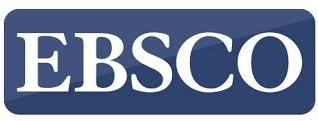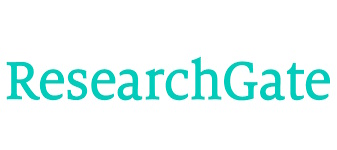Proposing a Positive Leadership Model in the Ecosystem of Iranian Higher Education (A Qualitative Approach)
Keywords:
Positive leadership, higher education, educational ecosystem, educational managementAbstract
The aim of the present study is to propose a positive leadership model within the ecosystem of Iranian higher education. Adopting the qualitative research tradition of content thematic analysis, this study presents a model of positive leadership adapted to the higher education context in Iran. The research domain encompassed all relevant international articles published between 2000 and 2025, as well as domestic articles in the same field from 2010 to 2024. A total of 77 articles were selected through purposive criterion-based sampling and subsequently analyzed and coded. After data saturation was reached, the data were analyzed using an inductive thematic analysis approach through coding and categorization, with validation ensured via the “independent coders” method. The findings revealed that the core components of positive leadership include a focus on virtue, supportiveness, positive affect, positive agency, and meaningfulness. These components enhance relationships among team members and foster a positive and constructive educational environment within universities. The implementation of these components can assist academic leaders in increasing motivation and supporting their members, ultimately leading to improved quality in both teaching and research at educational institutions. Positive academic leadership may yield beneficial outcomes for universities, faculty, students, and even the broader society. The proposed model in this study can serve as a framework for nurturing and developing positive leaders and as a practical guide for educational managers and leaders aiming to bring about positive and sustainable changes in Iran's higher education system. Positive leadership has a high potential for generating desirable outcomes at various levels. However, achieving these outcomes requires a comprehensive and validated model and framework. The model presented in this research can serve as a practical guide for educational managers and leaders striving to create positive change in the higher education system in Iran. Additionally, this model can be employed to foster and develop positive academic leaders.
Downloads
References
Abbas, A., Saud, M., Suhariadi, F., Usman, I., & Ekowati, D. (2022). Positive leadership psychology: Authentic and servant leadership in higher education in Pakistan. Current Psychology, 41(9), 5859-5871. https://doi.org/10.1007/s12144-020-01051-1
Aghababayi, R., Hoveyda, R., & Rajayipour, S. (2013). Relationship of positive leadership strategies and components of quantum organization. Educ Strategy Med Sci, 6(3), 165-169. http://www.edcbmj.ir/browse.php?a_code=A-10-559-1&sid=1&slc_lang=fa
Amir, M. T. (2020). Evaluation of positive meaning as a positive leadership strategy: A case of consumer good company in Indonesia. International Journal of Innovation, Management and Technology, 11(2), 876-899. https://www.ijimt.org/vol11/878-NB0013.pdf
Annison, J., & Davidson, A. (2023). "Few things in life are easy and worth doing": how the bi-directional relationships between meaningful work and work-related stress can both help and hinder wellbeing. Frontiers in psychology, 14, 1244051. https://doi.org/10.3389/fpsyg.2023.1244051
Azila-Gbettor, E. M., Honyenuga, B. Q., Atatsi, E. A., Laryea, C. N. A., & Quarshie, A. N. K. (2024). Reviewing the influence of positive leadership on worker well-being: A comprehensive analysis. Heliyon, 10(2). https://doi.org/10.1016/j.heliyon.2024.e24134
Benito, Á., Jiménez-Bernal, M., Lajud-Desentis, C., Moreno-Melgarejo, A., & Muñoz-Sepúlveda, J. A. (2019). Expanding the limits of positive leadership into the world of higher education. International Journal of Learning, Teaching and Educational Research, 18(2), 29-42. https://doi.org/10.26803/ijlter.18.2.3
Benito Capa, Á., Canteri, K., Grimley, M., Khanka, S., Lajud Desentis, C., Moreno Melgarejo, A., & Vasu, T. (2018). Introducing Positive Leadership in the teaching & learning process of Higher Education. http://abacus.universidadeuropea.es/handle/11268/7638
Black, S. A. (2015). Qualities of effective leadership in higher education. Open Journal of Leadership, 4(02), 54. https://www.scirp.org/journal/paperinformation?paperid=57195
Cameron, K. (2012). Positive leadership: Strategies for extraordinary performance. Berrett-Koehler Publishers Translators: Reza Hoviyda, Mohamad Forouhar, Abdalrasool Jamshidian Isfahan: Payame Alavi. http://psycap.blogfa.com/post/72
Chen, C. Y., Tsai, S. S., Chen, H. W., & Wu, H. T. (2016). The relationship between the principal's positive leadership and school effectiveness: take school organizational culture as the mediator. European journal of psychological research, 3(2).
Cheng, M. Y., & Lin, Y. Y. (2012). The effect of gender differences in supervisors' emotional expression and leadership style on leadership effectiveness. African journal of business management, 6(9), 3234. https://doi.org/10.5897/AJBM11.1705
Code, J. (2020). Agency for learning: Intention, motivation, self-efficacy and self-regulation. Frontiers in Education, 5(19), 1-15. https://doi.org/10.3389/feduc.2020.00019
Debono, D. P. (2023). The Impact of Positive Leadership on the Professional Growth of Primary School Teachers. Malta Journal of Education, 4(2), 98-116. https://doi.org/10.62695/FDYQ2585
Dehnavi, A., & Jafari, P. (2020). Providing a Desirable Model of Competition for Educational Progress in University (Case study: Islamic Azad University). Educ Strategy Med Sci, 13(3), 151-161. https://edcbmj.ir/browse.php?a_id=2382&sid=1&slc_lang=en
Eftekhari, F., & Rahimi, H. (2020). Studying the Mediating Role of Psychological Empowerment in the Effect of Positive Leadership On Organizational Trust (Studied Case: Teachers of Kashan Schools). Journal of Human Resource Management, 10(2), 101-124. https://doi.org/10.22034
Fakhrossadat Nasiri, G. S., Maryam. (2021). Correlation analysis of positive leadership and smart leadership with school entrepreneurship: Testing the mediating role of teachers' self-efficacy. Quarterly Journal of New Thoughts on Education, 16(4), 237-258. https://www.sid.ir/paper/412671/fa
Fischer, T., Dietz, J., & Antonakis, J. (2024). A fatal flaw: Positive leadership style research creates causal illusions. The Leadership Quarterly, 35(3). https://doi.org/10.1016/j.leaqua.2023.101771
Forouhar, M. (2020). The role of strengths based leadership in individual development with the role of mediating of Psychological capital, Job Crafting and Learning Agility Doctoral dissertation for Isfahan University].
Forouhar, M., Hoveida, R., Jamshidian, A., & Ghanenia, M. (2020). Investigating the Role of Psychological Capital on Individual Development, Learning Agility as a Mediator. Studies in Learning & Instruction, 12(1), 201-222. https://iieshrm.ir/browse.php?a_id=1060&sid=1&slc_lang=en
Forouhar, M., Hoveida, R., Jamshidian, A., & Ghanenia, M. (2021). The Effect of Strengths-Based Leadership on Job Crafting with Mediating Role of Psychological Capital and Learning Agility. Strategic studies in the oil and energy industry, 12(47), 92-111. https://iieshrm.ir/browse.php?a_id=1060&sid=1&slc_lang=en
Forouhar, M., Maleki, S., & Rashid, S. B. (2014). Meaning at Work: Meaning and Sources. Second International Conference on Management Challenges and Solutions, https://civilica.com/doc/378879
Gauthier, H. (2015). A multi-dimensional model for positive leadership. Precision Nanomedicine, 5(1), 9. https://slr.scholasticahq.com/api/v1/attachments/207/download
Giraud, L., Frimousse, S., & Le Bihan, Y. (2022). Mindful and Positive leadership Interventions: the impacts on positive experiences, traits, and behaviors. Revue De Gestion Des Ressources Humaines, 124(2), 3-23. https://doi.org/10.3917/grhu.124.0003
Goetz, T., Botes, E., Resch, L. M., Weiss, S., Frenzel, A. C., & Ebner, M. (2024). Teachers emotionally profit from positive school leadership: Applying the PERMA-Lead model to the control-value theory of emotions. Teaching and Teacher Education, 141, 104517. https://doi.org/10.1016/j.tate.2024.104517
Haghparast, K., & Rastgar, A. (2021). Investigating the impact of positive leadership on employee innovative behaviors: The mediating role of job engagement and positive psychological capital in knowledge-based companies. Organizational Behaviour Studies Quarterly, 10(3), 143-172. https://www.sid.ir/paper/1038103/fa
Heydari, M., Ghorbanidulatabadi, M., & Mohammadjani, S. (2018). Examine the multi relationships between positive leadership strategies, work engagement and social vitality of Islamic Azad University, Fars Province. Journal of New Approaches in Educational Administration, 8(32), 43-64. https://ensani.ir/fa/article/381910/
Howell, J. L., Bullington, K. E., Gregory, D. E., Williams, M. R., & Nuckols, W. L. (2022). Transformational leadership in higher education programs. Journal of Higher Education Policy and Leadership Studies, 3(1). https://doi.org/10.52547/johepal.3.1.51
Jingwa, L. I. (2019). A case of positive teacher-leadership: Positive deviance in a Canadian high school Doctoral dissertation, University of Saskatchewan]. https://core.ac.uk/download/pdf/228344043.pdf
Kasalak, G., Güneri, B., Ehtiyar, V. R., Apaydin, Ç., & Türker, G. Ö. (2022). The relation between leadership styles in higher education institutions and academic staff's job satisfaction: A meta-analysis study. Frontiers in psychology, 13, 1038824. https://doi.org/10.3389/fpsyg.2022.1038824
Kinnunen, P., Ripatti-Torniainen, L., Mickwitz, Å., & Haarala-Muhonen, A. (2024). Bringing clarity to the leadership of teaching and learning in higher education: a systematic review. Journal of Applied Research in Higher Education, 16(1), 265-280. https://doi.org/10.1108/JARHE-06-2022-0200
Kouhsari, M., Navehebrahim, A., Zeinabadi, H., & Abbasian, H. (2023). Providing an indigenous model of positive leadership for primary school principals. Journal of New Approaches in Educational Administration, 14(5), 19-11. https://doi.org/10.1080/13603124.2022.2052759
Lacerenza, C. N., & Cheng, Z. (2023). Develop me-quickly! Introducing nudges as a way to boost positive leadership and sustainment of non-prototypical leaders. 1-9. https://positiveleadership.louisville.edu/wp-content/uploads/2024/01/Final-Report_with-references.pdf
Lewis, S. (2014). Positive psychology at work: How positive leadership and appreciative inquiry create inspiring organizations. John Wiley & Sons Translators: Mohamad Forouhar, Abdalrasool Jamshidian & Maryam Geneina Tehran: Petroshimi pub. https://www.wiley.com/en-us/Positive+Psychology+at+Work%3A+How+Positive+Leadership+and+Appreciative+Inquiry+Create+Inspiring+Organizations-p-9781119990390
Liden, R. C., Wang, G., & Wang, Y. (2025). The evolution of leadership: Past insights, present trends, and future directions. Journal of Business Research, 186, 115036. https://doi.org/10.1016/j.jbusres.2024.115036
Malinga, K. S., Stander, M., & Nell, W. (2019). Positive leadership: Moving towards an integrated definition and interventions. Theoretical approaches to multi-cultural positive psychological interventions. https://doi.org/10.1007/978-3-030-20583-6_9
Maunz, L. A., Thal, S., & Glaser, J. (2024). Authentic leaders, energized employees? Indirect beneficial and adverse effects of authentic leadership on intrinsic motivation and exhaustion. Applied Psychology, 73(4), 2224-2262. https://doi.org/10.1111/apps.12546
Mehdizadeh, I., Rajaeepor, S., & Siadat, S. A. (2023). Organizational Silence and Positive Leadership Strategies: The Mediating Role of Psychological Empowerment. Journal of Public Administration, 15(1), 67-93. https://www.sid.ir/paper/1093221/fa
Moghtadaei, L. (2020). The Relationship between Positive Leadership and Social Isolation with the Mediating Role of Spirituality at Work in the Pandemic of COVID-19 (Case Study: Teachers in Isfahan). Strategic Research on Social Problems, 9(2), 79-108. https://doi.org/10.22108/srspi.2020.123954.1577
Monzani, L., & Van Dick, R. (2020). Positive leadership in organizations In Oxford Research Encyclopedia of Psychology. In. https://doi.org/10.1093/acrefore/9780190236557.013.814
Mosa Moghadas, P., Jafari, P., Noor Rahmani, M., & Ghorchian, N. (2023). Identifying Factors Affecting Positive Leadership among School Principals. Quarterly Journal of Educational Leadership & Administration, 17(2), 194-211. https://magiran.com/p2631652
Naami, A., & Mansouri, A. (2023). Developing a Model for the Effect of Positive Leadership on Proactive Work Behavior and Psychological Empowerment: The Mediating of Organizational Reliance. Positive Psychology Research, 8(4), 1-16. https://ppls.ui.ac.ir/article_27242.html?lang=en
Niemiec, R. M. (2023). The strengths-based workbook for stress relief Translators: Mohamad Forouhar, Kiana Moslehi, Zakiyeh Noori. Arjmand. https://www.arjmandpub.com/book/2198/
Redín, D. M., Meyer, M., & Rego, A. (2023). Positive leadership action framework: Simply doing good and doing well. Frontiers in psychology, 13, 977750. https://doi.org/10.3389/fpsyg.2022.977750
Safarzadeh, S., & Naemi, A. (2020). The Impact of Positive Leadership on Work Engagement with the Mediating Role of Psychological Empowerment among the Managers in High Schools of Sabzevar City. Management and Educational Perspective, 2(3), 69-92.
Salas-Vallina, S., & Fernández-Guerrero, R. (2020). The human side of leadership: Inspirational leadership effects on follower characteristics and happiness at work (HAW). Journal of Business Research, 107, 162-171. https://doi.org/10.1016/j.jbusres.2018.10.044
Sheivandi, K. (2018). Examine and evaluate relationship between the positive leadership and its dimensions with teachers psychological capital. Journal of Educational Leadership Research, 3(10), 141-116. https://jrlat.atu.ac.ir/article_9063.html
Tee, E. Y. (2015). The emotional link: Leadership and the role of implicit and explicit emotional contagion processes across multiple organizational levels. The Leadership Quarterly, 26(4), 654-670. https://doi.org/10.1016/j.leaqua.2015.05.009
Toker, A. (2022). Importance of leadership in higher education. International Journal of Social Sciences & Educational Studies, 9(2), 230-236. https://doi.org/10.23918/ijsses.v9i2p230
Yan, Y., Zhang, J., Akhtar, M. N., & Liang, S. (2023). Positive leadership and employee engagement: The roles of state positive affect and individualism-collectivism. Current Psychology, 42(11), 9109-9118. https://doi.org/10.1007/s12144-021-02192-7
Downloads
Published
Submitted
Revised
Accepted
Issue
Section
License
Copyright (c) 2025 هاجر بهرامیان (نویسنده); بدری شاه طالبی; نصرالله قشقائی زاده (نویسنده)

This work is licensed under a Creative Commons Attribution-NonCommercial 4.0 International License.








